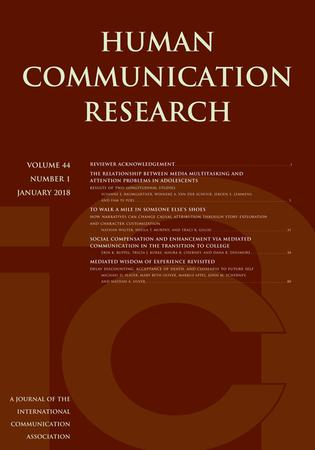疫情期间的总统沟通:对其与美国党派观念和行为关系的纵向考察
IF 4.4
1区 文学
Q1 COMMUNICATION
引用次数: 0
摘要
党派关系在塑造个人对美国COVID-19大流行的反应方面发挥了关键作用。目前的项目应用扩展并行处理模型(epppm)来研究白宫新闻发布会的内容特征如何与大流行早期阶段在观念和行为上的党派差距相关联。研究1使用监督机器学习分析了2020年白宫关于大流行的新闻发布会。结果表明,白宫关注的是有效性,但包含的威胁信息很少。研究2使用白宫新闻发布会上的威胁和功效信息来预测感知的威胁和功效,以及通过使用具有全国代表性的美国成年人样本进行纵向调查来测量的自我隔离行为。时间序列分析表明,来自白宫的威胁信息的增加与随后民主党和共和党之间在感知威胁和自我隔离行为上的党派差距的缩小有关,因为共和党人的感知威胁和自我隔离行为增加了。这项研究通过系统地研究特定的信息特征,并将它们与公共卫生危机背景下的公众认知和行为联系起来,为总统传播研究做出了贡献。该研究还将epm扩展到一个动态模型,估计了积极(即效能)和消极(即威胁)信息对感知和行为的不对称效应和自我连续性。本文章由计算机程序翻译,如有差异,请以英文原文为准。
Presidential communication during the pandemic: a longitudinal examination of its relationship with partisan perceptions and behaviors in the United States
Partisanship played a key role in shaping individuals’ responses to the COVID-19 pandemic in the United States. The current project applies the extended parallel processing model (EPPM) to examine how the content features of White House press conferences were associated with the partisan gap in perceptions and behavior during the early stage of the pandemic. Using supervised machine learning, Study 1 analyzes the White House press conferences regarding the pandemic during 2020. The results demonstrate that the White House focused on efficacy but included minimal threat information. Study 2 uses the threat and efficacy information in White House press conferences to predict perceived threat and efficacy as well as self-quarantine behavior measured by longitudinal surveys using nationally representative samples of U.S. adults. Time-series analysis shows that an increase of threat information from the White House was associated with a subsequent decrease in the partisan gap between Democrats and Republicans on perceived threat and self-quarantine behavior by increasing perceived threat and self-quarantine behavior among Republicans. This study contributes to presidential communication research by systematically examining specific message features and linking them to public perceptions and behaviors in the context of a public health crisis. The study also extends the EPPM to a dynamic model, estimating the asymmetric effects and self-continuity of positive (i.e., efficacy) and negative (i.e., threat) information on perceptions and behaviors.
求助全文
通过发布文献求助,成功后即可免费获取论文全文。
去求助
来源期刊

Human Communication Research
COMMUNICATION-
CiteScore
8.20
自引率
2.00%
发文量
28
期刊介绍:
Human Communication Research is one of the official journals of the prestigious International Communication Association and concentrates on presenting the best empirical work in the area of human communication. It is a top-ranked communication studies journal and one of the top ten journals in the field of human communication. Major topic areas for the journal include language and social interaction, nonverbal communication, interpersonal communication, organizational communication and new technologies, mass communication, health communication, intercultural communication, and developmental issues in communication.
 求助内容:
求助内容: 应助结果提醒方式:
应助结果提醒方式:


